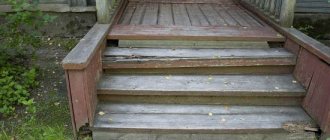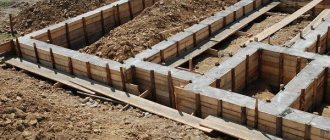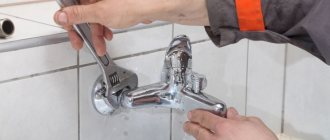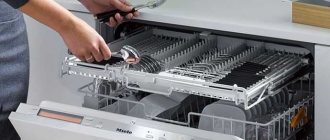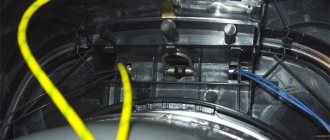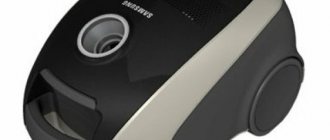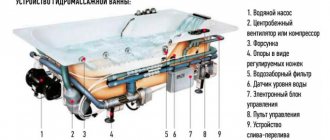A concrete mixer is equipment designed for preparing various mortars and mixing dry mixtures. Its use ensures high productivity of work. At the same time, compared to the manual method, it is ensured that a higher quality finished material is obtained at the output. But in order to achieve this, you need to properly mix the concrete or other composition, observing the proportional relationships between its components and the order in which they are added. There are concrete mixers of different operating principles on the market. This affects the maximum size of filler fractions that can be mixed when preparing the solution.
Design and principle of operation of a concrete mixer
Working effectively with a concrete mixer requires knowledge of its design. This is necessary so that, if necessary, you can repair the equipment model you are using yourself and perform its maintenance correctly.
The design of any concrete mixer requires the presence of the following general structural parts:
- containers (drums) for mixing the solution;
- frame, which is a steel supporting structure on which all other elements of the concrete mixer are fixed;
- blades designed for mixing concrete or other mixtures and preventing them from sticking to the walls of the container;
- drive with transmission mechanism and control system for it.
These structural elements are shown in the photograph below.
The metal drum can be of different shapes, for example, cylindrical, pear-shaped, barrel-shaped.
A concrete mixer can operate using muscle power or the presence of an electric motor or internal combustion engine. In the first case, the drum is driven by a worker by rotating a special handle. But mechanical versions of the equipment are quite rare. The most widespread are units with electric motors. They are equipped with a push-button post, with the help of which the operation of the mechanisms is controlled. The power of the installed drive determines the purpose of the equipment for domestic or professional use.
Based on the installation method, concrete mixers are divided into stationary and mobile models. The latter are equipped with wheels for ease of transportation.
There are two types of concrete mixers based on the method of mixing the solution:
- gravitational;
- forced.
The operating principle of a gravity-type concrete mixer is based on lifting the mixture being mixed by a rotating drum and its subsequent falling under the influence of gravity . At the same time, fixed blades located inside the container additionally separate the composition, facilitating the faster formation of a homogeneous mass. The material is unloaded through the loading opening using a drum tipping mechanism driven by a wheel or lever.
In gravity models, rotation from the motor to the container is transmitted through a gearbox or crown.
A forced concrete mixer works like a mixer: inside a stationary drum, a shaft with blades mixes the solution. The finished composition is unloaded through a slide gate, which is located at the bottom of the container. The shaft can be positioned horizontally or vertically (shown in the photo above). Forced-action models are equipped with more powerful electric motors than gravity models and are also more expensive.
Design of a gravity concrete mixer with a drum crown drive
Let's take a closer look at the design of a gravity concrete mixer with a crown drive, which rotates the drum using an electric, gasoline or diesel engine. Of these, the most common type is an electric motor powered by a 220 V network. In the case where complete autonomy of the concrete mixer is required (for example, when the networks for supplying electricity have not yet been connected), models with internal combustion engines are used.
The main part of the concrete mixer is the drum. The blades are fixed on its walls. An axle is attached to the bottom of the drum, which is mounted on a traverse through a bearing. Along the entire circumference of the drum in the central part there is a crown (an encircling round toothed gear), through which rotation from the engine will be transmitted to the drum.
The traverse with the drum attached to it is fixed to the support frame (through bushings and rolling bearings). On one side of the frame there is a mechanism for tilting the container with a lock to create the required working angle and the possibility of unloading the finished solution. On the other side, an electric motor block and a working gear are attached.
Rotation from the engine is transmitted to the working gear (usually using a belt drive), which meshes with the drum ring gear. Thus, the rotation of the gear sets the drum in motion and the solution is mixed.
The electrical circuit diagram of a household concrete mixer is quite simple and consists of:
- electric motor;
- starting capacitor;
- start-stop switch;
- circuit breaker for protection against short circuits and overloads (for some models it is combined with a switch).
The electrical part of the concrete mixer is presented in detail in the video:
For many models, the frame is equipped with 2 (sometimes 4) wheels, which makes moving the device around the site much easier.
The difference between concrete mixers with a gear drive is that the motor and gearbox are attached to the bottom of the crosshead. Rotation from the engine is transmitted through a gearbox (which reduces engine speed and increases torque) to the drum axis. In all other respects, the design of the frame and tipping device is no different from models with a crown drive.
Some models of concrete mixers are sold disassembled. Detailed instructions for self-assembly are included in the package. If you have any questions, watch the video:
Some manufacturers offer concrete mixers in the form of ready-made car trailers. This greatly simplifies their transportation and subsequent operation.
Concrete mixer performance
The performance of a concrete mixer of both gravity and forced operating principles is determined by the following factors:
- time for stirring the solution until ready;
- drum volume;
- electric motor power;
- material unloading time;
- the number of batches that can be prepared within an hour.
The mixing time is indicated by the equipment manufacturer in the operating instructions for it. A kneading that occurs in about 2-3 minutes is considered fast.
The power value determines the number of hours during which the concrete mixer can be operated without overloading the electric motor. To calculate how much concrete can be mixed with a concrete mixer per day, you need to perform the following simple mathematical steps:
- add up the durations of loading, mixing and unloading;
- determine the number of batches per hour by dividing 60 minutes by the figure obtained in the paragraph above;
- find the volume of finished material in 1 hour by multiplying the capacity of the drum by the calculated number of batches;
- multiply hourly productivity by the permissible number of working hours per day.
The productivity of gravity-action units is comparable to forced analogues with similar technical characteristics, in which the shaft is located vertically. Models with a horizontal shaft have lower performance. This is due to the fact that their shipping process takes longer.
Proper preparation of concrete mixture
Pouring a foundation, screeding a floor, laying floor slabs, bricks, cinder blocks and many other construction and repair works involve the need to prepare concrete mortar in large quantities. In this case, you need to mix the concrete correctly in a concrete mixer so that it turns out to be of good quality. In this case, after pouring and compacting, you will get a durable monolith.
Proper preparation of concrete is as follows:
- in the use of high-quality components (for example, unhardened cement of the required grade, clean sand with crushed stone);
- thoroughly mixing the final mixture;
- in maintaining proportions between components.
Before preparing the solution, you need to purchase all the necessary materials, having previously calculated their required quantity. You will also need water.
The proportions of concrete for foundations and other monolithic structures are determined by the brand of cement used: the higher it is, the less of this component is added to the mixed mixture. If the correct ratios are observed, the strength of the monolith remains at the proper level. When preparing concrete, you should also take into account the moisture content of the sand and crushed stone: if they are wet, then less water needs to be added.
Before mixing the solution, the concrete mixer should be placed in a stable position on a level, hard surface. You need to locate the equipment closer to the place where it is used, so that you don’t have to carry it far in buckets. The wheels of the unit should be secured in a stationary position using brakes. An old bathtub or a large trough is well suited for unloading the finished material - it is convenient to collect the solution from them. Setting up the bucket and overturning the mixer every time is extra work.
It is recommended to mix concrete in the following sequence:
- add water;
- pour cement;
- add the required fillers (sand and crushed stone);
- add the necessary additives if necessary (for example, plasticizer);
- run the concrete mixer for the time specified in the operating instructions for the model used.
The temperature of the concrete mixture at the outlet of the concrete mixer should be approximately from +5 to +30 degrees (there may be slight deviations for different brands of cement). In this case, the finished material will comply with technological standards.
Making the solution takes some time. The exact duration of stirring depends on the additives added and the consistency of the mixture. Therefore, it is recommended to visually monitor the quality of the output material, and if there are lumps, increase the mixing time.
Purpose and principle of operation
A concrete mixer is used for preparing concrete, cement, mortar and feed mixtures from solid or granular components. The main function of the unit is to improve the quality of the resulting solution compared to mixing with hand tools. The operation of the concrete mixer is carried out due to the operation of a gasoline or electric motor, a rotating container and blades that cut the concrete mass.
Devices for mixing the solution come in different types: for private use, small-capacity mini-units are used, and on an industrial scale, large mobile units are used. The size of a concrete mixer depends on the specific task: capital construction (construction of swimming pools, foundations, access roads) requires a large-sized mixer for the production of large volumes of solutions. To solve small construction tasks, compact units are used. Typically, during large-scale construction, both types of concrete mixers are used.
The design of the concrete mixer consists of the following parts:
- A working container in the form of a drum with blades for mixing components.
- Base (frame).
- Electric motor with gearbox.
The volume of the container can range from 100 to 300 or more liters, depending on the power of the equipment and the scale of the work performed.
Cleaning the concrete mixer after work
After use, an adhering solution remains on the walls of the drum, both outside and inside, from which they need to be cleaned. The working material also accumulates between the blades and contaminates the frame. If the solution is allowed to harden, it will need to be beaten with a hammer or other suitable tools. This removal method leads to the following negative consequences:
- the appearance of dents;
- knocking down paint, after which the metal begins to rust and corrode at a faster rate;
- impossibility of complete cleaning (dried solution remains in hard-to-reach places, for example, at the junction of the blades with the body).
Also, impact removal has a bad effect on the support bearing, accelerating its failure.
To prevent such consequences, it is necessary to wash the concrete mixer from hardened cement immediately after finishing work. Timely rinsing is especially important when the mixed composition contains plasticizing additives that have increased sticking properties: after hardening, removing them is very problematic.
It is recommended to perform rinsing not only at the end of the work shift, but also during the shift after a maximum of 2 batches. It is better to carry out the cleaning process by pouring water under pressure on a running concrete mixer. If this is not possible, then you need to pour water into the drum in the required quantity and spin it. You can also wipe the walls outside and inside with a rag or brush.
The dirty water remaining inside the container after washing can be used for the next batch. You cannot leave it inside, because the plasticizer and cement deposited in the liquid will set. After cleaning, turn the container over to drain the water.
You can reduce the destructive effect of the cement mortar and reduce its ability to adhere to the walls of the concrete mixer drum. For these purposes, before starting work, the inner and outer surfaces of the container should be treated with water-repellent and anti-corrosion compounds. Silicone or automotive anti-corrosion agent are suitable as such materials. A one-time treatment is enough for approximately 3 months of regular use of the equipment. After this period has expired, the drum can be re-coated with a suitable composition.
Basic concrete mixer malfunctions and their elimination
During operation, various breakdowns occur. In some cases, you can easily repair a concrete mixer yourself, without contacting service center specialists. Most often, concrete mixer malfunctions are associated with the following components and parts.
Gearbox
Gearbox failure is classified as complex and quite expensive. Often replacing one gear is not enough. You have to install a new node.
Support bearings
To install a new bearing, you first need to remove the drum and gear. Then you need to knock out the shaft. Then you need to pull the bearing off with a puller. Instead of a worn or broken one, you should put in a whole unit and assemble it in reverse order.
Ring gear or gear meshing with it
The crown can be sectored or solid. Only the first type of part can be replaced without disassembling the concrete mixer. To remove a worn drive gear, unscrew the bolted connection that secures it. Then this part is dismantled, replacing it with a new one.
Electric drive
If the electric motor from a manual concrete mixer heats up, this may be caused by its overload or burning of the windings or jamming of the rotor. A multimeter will help determine the health of the electrical part of the engine. It is used to determine the integrity of the windings of a disconnected motor. If a break is detected, you will need to purchase a new motor. In general, the list of problems associated with the electric motor is quite wide. Often their elimination requires special knowledge.
Belt drive (with pulley or belt)
Tensioning the belt or changing it is convenient for two people. The features of the process are determined by the design of the concrete mixer being used. To change a worn-out plastic pulley, you will need to unscrew its fastenings after first removing the container.
Button for turning on the electric motor of a concrete mixer
A multimeter can also help determine if the start button is working properly. To do this, the button must first be removed and the appropriate wiring disconnected. Afterwards you need to disassemble the button. If the starter coil is intact, then the problem is dirty contacts. It is enough to clean them with fine sandpaper to restore the functionality of the button. The burnt coil will need to be replaced with a new one.
Over time, wear and tear causes holes in the drum. They are covered with pieces of sheet metal of a suitable size using welding or bolting. Not often, but it happens that the frame (bed) bursts. Fix the breakdown using a welding machine. You also rarely have to change wheels.
To repair equipment with your own hands, you will need to use various tools, devices and devices. An approximate list of them includes:
- multimeter;
- Bulgarian;
- electric drill;
- welding machine;
- hammer;
- pliers and round nose pliers;
- spanners;
- screwdrivers;
- caliper, ruler or tape measure.
Replacing a bearing that has worn out requires the use of a special puller.
Constant loads, improper maintenance and care, wear and tear of parts over time lead to various types of problems with the concrete mixer. In this case, you can entrust the repair of a concrete mixer to specialists or do it yourself. In the latter case, if the unit is not under warranty, you will be able to save a significant amount. In order for the equipment in use to last a long time without breakdowns, it must not be overloaded. You also need to pay attention to the first signs of problems and eliminate them in a timely manner. The equipment should always be thoroughly cleaned to remove any remaining adhering solution.
Types of concrete mixers
Such construction equipment has several modifications depending on the classification attribute. Depending on the method of mixing the compositions, there are two types of devices:
- The gravity concrete mixer
is equipped with a rotating drum and fixed blades inside. The solution rises and falls under the influence of gravity, breaking on the blades and mixing. Such a unit is capable of working with different fractions of bulk solids. - , a forced concrete mixer
has a stationary drum and a rotating mixer inside. This device can only mix fine gravel. Forced-type units, as a rule, have a more powerful engine, which increases their price.
Another type of classification is the division of devices by the type of energy source used. The units are distinguished:
- electrical;
- gasoline;
- diesel;
- mechanical, driven by the physical effort of the worker.
Electric concrete mixer
For small construction work, when a concrete mixer is not needed, for example, pouring a foundation, a standard electric concrete mixer is used. Such a device is equipped with an electric motor with a power of up to 1 kW, powered by a network of 220 or 360 V. The first option is preferable, because a standard power supply network is available in almost every building. The advantages of the device are:
- Reasonable price for the unit itself.
- Wide selection of drum volumes.
- Low operating cost compared to diesel and gasoline options.
- The electric concrete mixer with pump does not emit smoke during operation, therefore it is completely environmentally friendly and can be used even indoors.
Gasoline concrete mixer
If there is no electricity at the construction site, a gasoline concrete mixer is used. It is equipped with a two-stroke internal combustion engine. The fuel for operating the device is a mixture of gasoline and motor oil, the cost of which is constantly increasing. During operation, the engine starts first, and then the mechanism itself for mixing the solution. Gasoline equipment can only be used outdoors to avoid carbon monoxide poisoning of construction workers. Due to high economic costs, such a device is in the least demand.
Diesel concrete mixer
Another type of device that can be used in conditions where there is no electricity is a diesel concrete mixer. It is equipped with an internal combustion engine powered by diesel fuel. The advantages of the device include lower operating costs than its gasoline counterpart. However, the unit also has its drawbacks:
- Heavy weight. A diesel engine weighs significantly more than a gasoline or electric engine.
- Seasonal use, because such a unit will be difficult to start in cold weather. With the advent of special chemical reagents for cement in cold weather, year-round construction is not uncommon.


